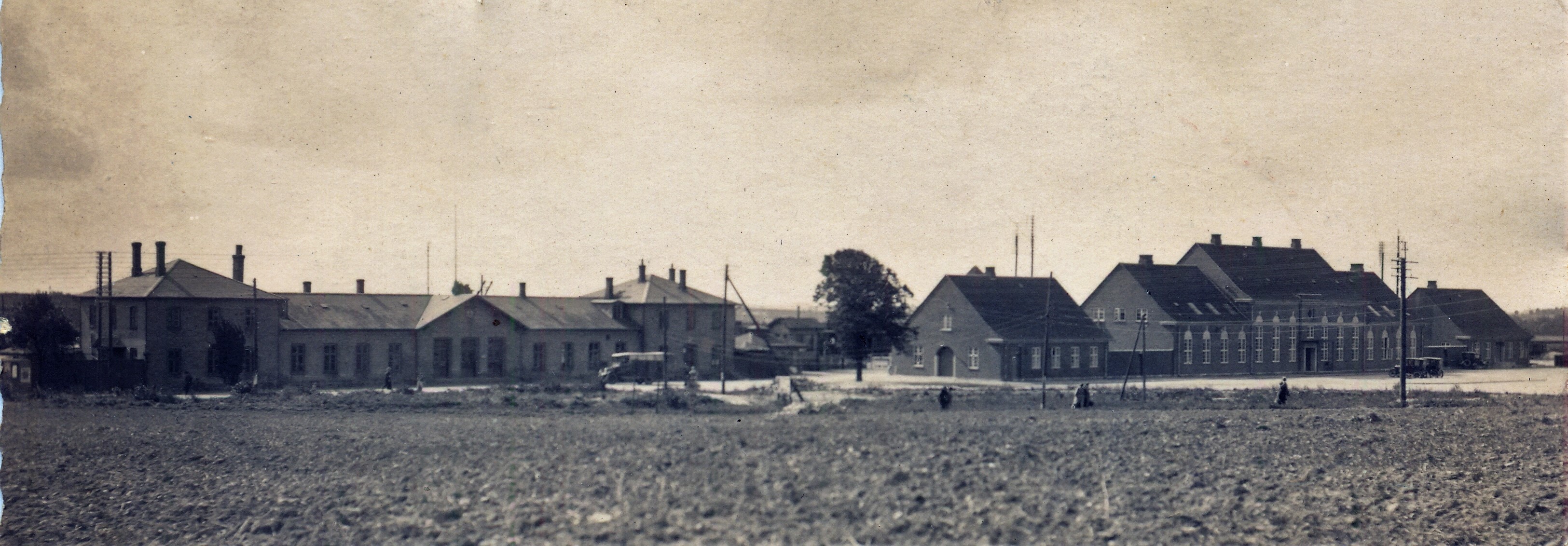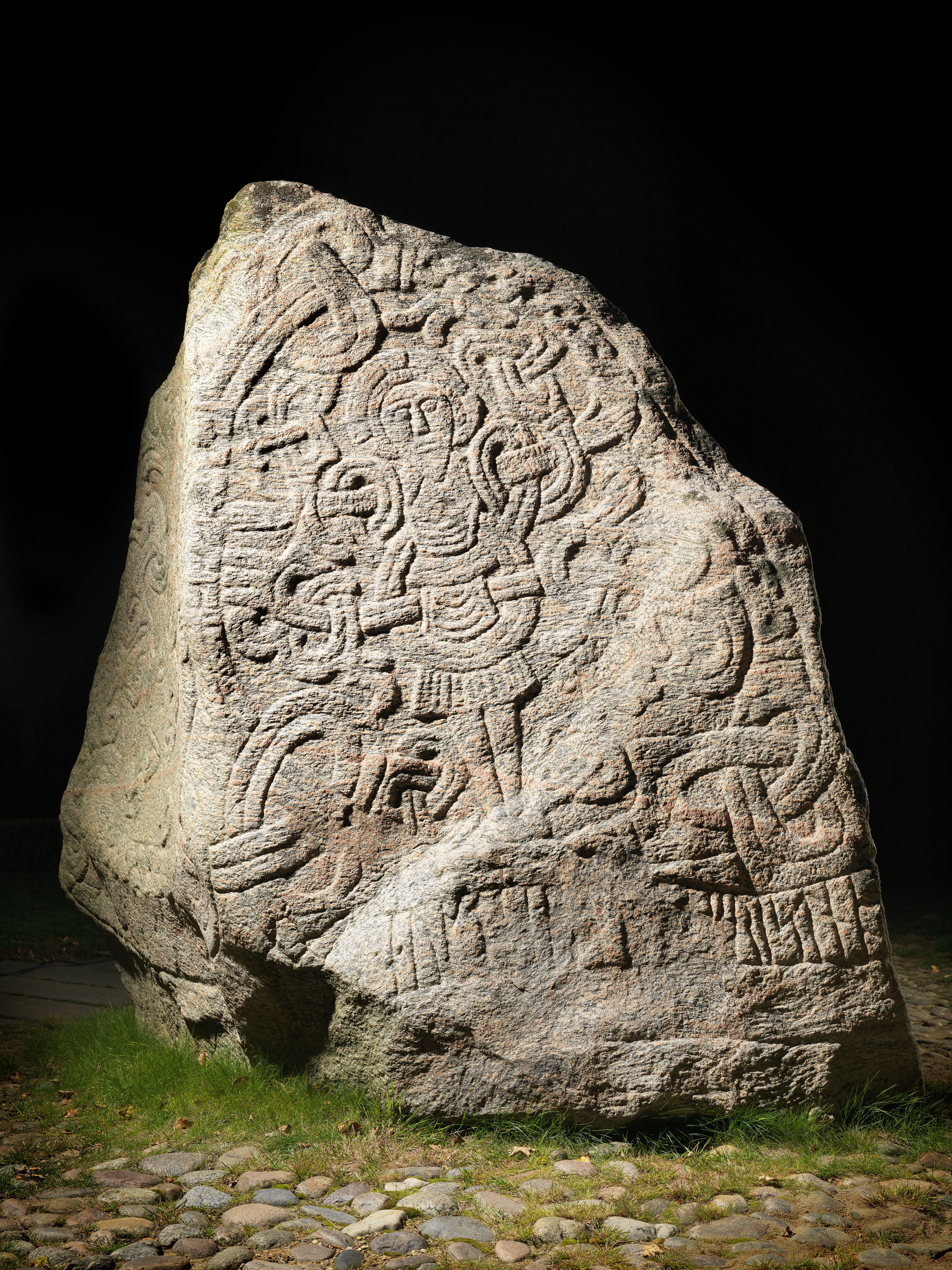|
Ringsted Railway Station
Ringsted railway station ( or ''Ringsted Banegård'') is a railway station serving the town of Ringsted in central Zealand, Denmark. It is located in the centre of the town, on the southern edge of the historic town centre, and immediately adjacent to the Ringsted bus station. Ringsted station is an important railway junction where the main line Copenhagen–Fredericia, Copenhagen–Ringsted, and South Line railway lines all meet. The station opened in 1856, and its second and current station building designed by the architect Knud Tanggaard Seest was inaugurated in 1924. The station offers direct Intercity rail services to Funen, Jutland and Copenhagen, as well as regional rail services to Copenhagen, Odense and Næstved, all operated by the national railway company DSB. History Ringsted railway station opened on 27 April 1856, as the Copenhagen–Roskilde railway line from Copenhagen to Roskilde, the first railway line in the Kingdom of Denmark, was prolonged from Roskild ... [...More Info...] [...Related Items...] OR: [Wikipedia] [Google] [Baidu] |
Railway Junction
A junction, in the context of rail transport, is a place at which two or more rail routes converge or diverge. This implies a physical connection between the tracks of the two routes (assuming they are of the same gauge), provided by ''points'' (US: switches) and signalling. Junctions are important for rail systems, their installation into a rail system can expand route capacity, and have a powerful impact upon on-time performance. Overview In a simple case where two routes with one or two tracks each meet at a junction, a fairly simple layout of tracks suffices to allow trains to transfer from one route to the other. More complicated junctions are needed to permit trains to travel in either direction after joining the new route, for example by providing a triangular track layout. In this latter case, the three points of the triangle may be given different names, for example using points of the compass as well as the name of the overall place. Rail transport operations refer ... [...More Info...] [...Related Items...] OR: [Wikipedia] [Google] [Baidu] |
Intercity Rail
Inter-city rail services are express passenger train services that run services that connect cities over longer distances than commuter or regional trains. There is no precise definition of inter-city rail; its meaning may vary from country to country. Most broadly, it can include any rail services that are neither short-distance commuter rail trains within one city area, nor slow regional rail trains calling at all stations and covering local journeys only. Most typically, an inter-city train is an express train with limited stops and comfortable carriages to serve long-distance travel. Inter-city rail sometimes provides international services. This is most prevalent in Europe, due to the close proximity of its 50 countries in a 10,180,000 square kilometre (3,930,000 sq mi) area. Eurostar and EuroCity are examples of this. In many European countries the word "InterCity" or "Inter-City" is an official brand name for a network of regular-interval, relatively long-distance ... [...More Info...] [...Related Items...] OR: [Wikipedia] [Google] [Baidu] |
Duchy Of Holstein
The Duchy of Holstein (german: Herzogtum Holstein, da, Hertugdømmet Holsten) was the northernmost state of the Holy Roman Empire, located in the present German state of Schleswig-Holstein. It originated when King Christian I of Denmark had his County of Holstein-Rendsburg elevated to a duchy by Emperor Frederick III in 1474. Members of the Danish House of Oldenburg ruled Holstein – jointly with the Duchy of Schleswig – for its entire existence. From 1490 to 1523 and again from 1544 to 1773 the Duchy was partitioned between various Oldenburg branches, most notably the dukes of Holstein-Glückstadt (identical with the Kings of Denmark) and Holstein-Gottorp. The Duchy ceased to exist when the Kingdom of Prussia annexed it in 1866 after the Austro-Prussian War. History The northern border of Holstein along the Eider River had already formed the northern border of the Carolingian Empire, after Emperor Charlemagne upon the Saxon Wars reached an agreement with King Hemmin ... [...More Info...] [...Related Items...] OR: [Wikipedia] [Google] [Baidu] |
Hamburg-Altona–Kiel Railway
The Hamburg-Altona–Kiel railway ( da, link=no, Christian VIII. Østersø Jernbane) is the oldest railway line in the German state of Schleswig-Holstein, and the first railway in Denmark or its dependencies at the time, and first to reach the Baltic Sea. (The Ludwigslust–Wismar railway is younger) Today, it connects Hamburg, Neumünster and Kiel. It is one of the first railways in Germany. When it opened in 1844, Altona and Kiel were the largest cities in the Duchy of Holstein. The line is now owned by DB Netz. Route The route begins at the terminal station of Hamburg-Altona. This line runs parallel to the route of Hamburg S-Bahn lines S3 and S21. The first stop on the main line is Pinneberg, which provides interchange with the S-Bahn. The Marsh Railway to the North Sea coast and the line to Henstedt-Ulzburg branch from Elmshorn. Further north in Neumünster the line connects to Flensburg, to Heide and Büsum and to Bad Oldesloe. Freight and express trains to S ... [...More Info...] [...Related Items...] OR: [Wikipedia] [Google] [Baidu] |
Danish Monarchy
The monarchy of Denmark is a constitutional political system, institution and a historic office of the Kingdom of Denmark. The Kingdom includes Denmark proper and the autonomous administrative division, autonomous territories of the Faroe Islands and Greenland. The Kingdom of Denmark was already consolidated in the 8th century, whose rulers are consistently referred to in Franks, Frankish sources (and in some late Frisians, Frisian sources) as "kings" (). Under the rule of King Gudfred in 804 the Kingdom may have included all the major provinces of medieval Denmark. The current unified Kingdom of Denmark was founded or re-united by the Vikings, Viking kings Gorm the Old and Harald Bluetooth in the 10th century. Originally an elective monarchy, it became hereditary monarchy, hereditary only in the 17th century during the reign of Frederick III of Denmark, Frederick III. A decisive transition to a constitutional monarchy occurred in 1849 with the writing of the first democrat ... [...More Info...] [...Related Items...] OR: [Wikipedia] [Google] [Baidu] |
Kingdom Of Denmark
The Danish Realm ( da, Danmarks Rige; fo, Danmarkar Ríki; kl, Danmarkip Naalagaaffik), officially the Kingdom of Denmark (; ; ), is a sovereign state located in Northern Europe and Northern North America. It consists of metropolitan Denmark, the kingdom's territory in continental Europe and sometimes called "Denmark proper" ( da, egentlige Danmark, links=no), and the realm's two autonomous regions: the Faroe Islands and Greenland.Administrative divisions – Denmark . Access date: 14 April 2012 The relationship between the three parts of the Kingdom is also known as The unity of the Realm ( ... [...More Info...] [...Related Items...] OR: [Wikipedia] [Google] [Baidu] |
Roskilde
Roskilde ( , ) is a city west of Copenhagen on the Danish island of Zealand. With a population of 51,916 (), the city is a business and educational centre for the region and the 10th largest city in Denmark. It is governed by the administrative council of Roskilde Municipality. Roskilde has a long history, dating from the pre-Christian Viking Age. Its UNESCO-listed Gothic architecture, Gothic Roskilde Cathedral, cathedral, now housing 39 tombs of the Danish monarchs, was completed in 1275, becoming a focus of religious influence until the Danish Reformation, Reformation. With the development of the rail network in the 19th century, Roskilde became an important hub for traffic with Copenhagen, and by the end of the century, there were tobacco factories, iron foundries and machine shops. Among the largest private sector employers today are the IT firm BEC (Bankernes EDB Central) and seed company DLF (seed company), DLF. The Risø DTU National Laboratory for Sustainable Energy, Ris ... [...More Info...] [...Related Items...] OR: [Wikipedia] [Google] [Baidu] |
Ringsted Station 1925
Ringsted is a city located centrally in the Danish island of Zealand. It is the seat of a municipality of the same name. Ringsted is situated approximately 60 km from Copenhagen. Tourism and transport Ringsted is one of Denmark's busiest transit cities. The city is located in the very middle of Zealand, connecting both the southern parts of Zealand as well as Funen and Jutland with the Copenhagen area. * Danish Tramway Museum of Skjoldenæsholm, near Jystrup. * Ringsted Station, served by both DSB domestic trains and international (EuroCity) services to Hamburg: frequent services to Copenhagen, Nykøbing Falster and Odense, although not all trains to Jutland stop at Ringsted — the bus station is in front of the railway station. * St. Bendt's Church — a Romanesque, former Benedictine, abbey church containing numerous tombs of medieval Danish royalty. History Ringsted was the site of ''Sjællands Landsting'' (lit. ''Zealand's county thing'') during the Middle Ages, w ... [...More Info...] [...Related Items...] OR: [Wikipedia] [Google] [Baidu] |
Næstved
Næstved () is a town in the municipality of the same name, located in the southern part of the island of Zealand in Denmark ) , song = ( en, "King Christian stood by the lofty mast") , song_type = National and royal anthem , image_map = EU-Denmark.svg , map_caption = , subdivision_type = Sovereign state , subdivision_name = Kingdom of Denmark , establishe .... Næstved has several adult education centers, five Primary education, elementary schools - and has at least one of each type of the four upper-second-level education centers. The city has the largest high school in Denmark, Education in Denmark, Næstved Gymnasium & HF. History Næstved has roots as far back as 400-500 BC. Archaeological material from this period has been found in the soil under Næstved, and tells of human life here long before the Viking Age, Viking era. The name of the city, Næstved, derives from two words: Næs and Tved. Tved means "cleared land" or "cleared wood" (as "thwaite" in ... [...More Info...] [...Related Items...] OR: [Wikipedia] [Google] [Baidu] |
Odense
Odense ( , , ) is the third largest city in Denmark (behind Copenhagen and Aarhus) and the largest city on the island of Funen. As of 1 January 2022, the city proper had a population of 180,863 while Odense Municipality had a population of 205,978, making it the fourth largest municipality in Denmark (behind Copenhagen, Aarhus and Aalborg municipalities). Eurostat and OECD have used a definition for the Metropolitan area of Odense (referred to as a '' Functional urban area''), which includes all municipalities in the Province (Danish: ''landsdel'') of Funen (Danish: ''Fyn''), with a total population of 504,066 as of 1 July 2022https://appsso.eurostat.ec.europa.eu/nui/show.do?dataset=urb_lpop1&lang=en&fbclid=IwAR2SFTy1xGM8VcLHijhmSDQWd9Fr3TYx7JlKxg81_09e-KzEtmEgjL5L2UU By road, Odense is located north of Svendborg, to the south of Aarhus and to the southwest of Copenhagen. The city was the seat of Odense County until 1970, and Funen County from 1970 until 1 January 2 ... [...More Info...] [...Related Items...] OR: [Wikipedia] [Google] [Baidu] |
Regional Rail
Regional rail, also known as local trains and stopping trains, are passenger rail services that operate between towns and cities. These trains operate with more stops over shorter distances than inter-city rail, but fewer stops and faster service than commuter rail. Regional rail services operate beyond the limits of urban areas, and either connect similarly-sized smaller cities and towns, or cities and surrounding towns, outside or at the outer rim of a suburban belt. Regional rail normally operates with an even service load throughout the day, although slightly increased services may be provided during rush-hour. The service is less oriented around bringing commuters to the urban centers, although this may generate part of the traffic on some systems. Other regional rail services operate between two large urban areas but make many intermediate stops. In North America, "regional rail" is not recognized as a service classification between "commuter rail" and "inter-city r ... [...More Info...] [...Related Items...] OR: [Wikipedia] [Google] [Baidu] |








